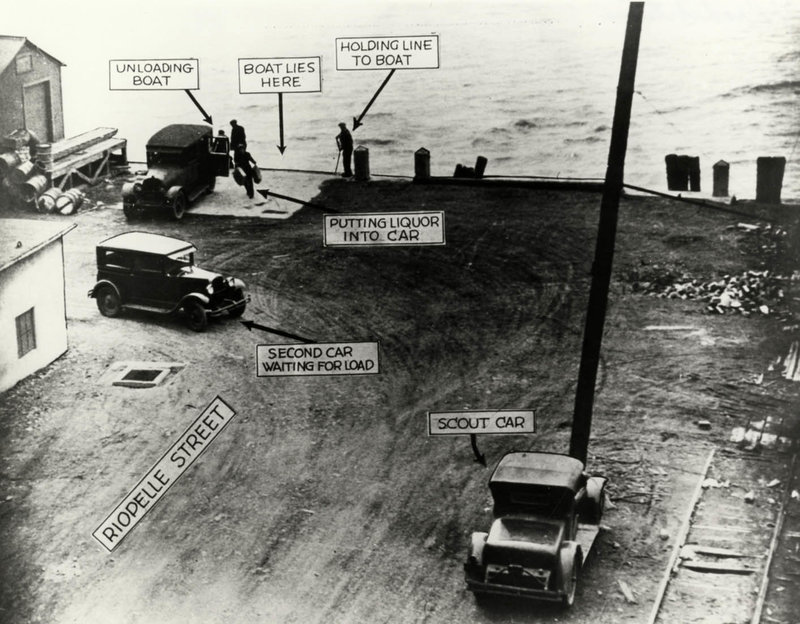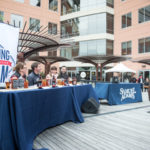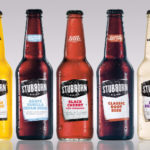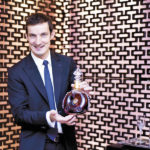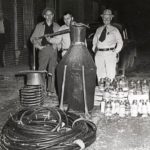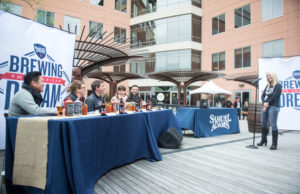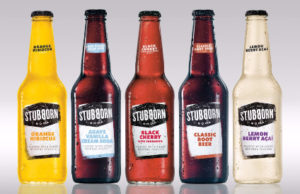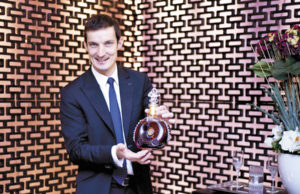Detroit Returns To Its Prohibition-Era Whiskeytown Roots, And Finds New Life
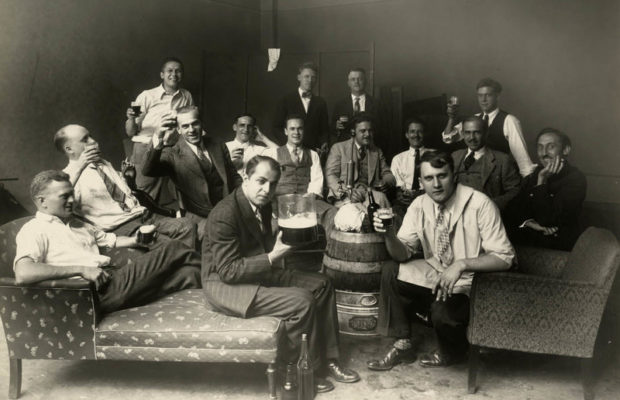
If you blinked, you might miss the quick burst of a headlight signaling that it was time to go.
One small boat, a single outboard motor: the only perceptible evidence of a clandestine Prohibition transaction on the shores of Detroit, in the dead of night. In winter, members of the notorious “Purple Gang” would motor across the frozen Detroit River to Canada in a lightweight “whiskey six” automobile to make the deal. The trick was to drive slow, to avoid falling through the ice. The Model T could be replaced, of course. But there would be hell to pay if Al Capone didn’t get his Canadian Club by tomorrow night.
The Motor City, newly manufactured in the early 20th century under the sharp-eyed gaze of Henry Ford, was a driving force during Prohibition, supplying as much as 75 percent of the country’s illegal liquor trade. Although the 18th amendment, enacted on Jan. 16, 1919, made producing, selling or transporting alcohol illegal in the United States, the country’s thirst for liquor did not subside with the new law. Americans still clamored for what evangelicals called “the Devil’s drink,” and the need for a steady supply route quickly emerged.
And Detroit, situated neatly along a narrow river, was a city that knew how to roll up its sleeves and get the job done.
The tiny boats would cross the Detroit River or Lake St. Clair to Ontario’s shore, where Canadian liquor suppliers waited. Escape cars transported the contraband from the coast to Michigan, evading the overworked and understaffed border. From there, it was a stealthy trek down to Chicago, where infamous players in the Prohibition-era mob scene, including whiskey-lover Capone, looked forward to their spoils.
The operation was almost exclusively controlled by Detroit’s Purple Gang, led by brothers Abe and Ray Bernstein, and some reform school cohorts. The Purples hailed from the impoverished Paradise Valley neighborhood on the city’s lower east side. The posse trolled the Detroit waterways during Prohibition, hijacking the liquor caches of rival gangs.
Rum-running quickly became lucrative; by 1929 it was “Detroit’s second largest industry, netting $215 million per year.” There were a rumored 25,000 speakeasies operating in the city. Detroit was reborn as “Whiskeytown,” where hushed murmurs on the streets directed thirsty patrons to sordid and gritty bars known as “blind pigs.” Behind those false storefronts, rakish young chaps emptied bottles of Canadian Club into the waiting glasses of flappers. And there were thousands more homemade stills in the city, where residents conjured up their own batches for personal use or for profit.
When the 21st amendment repealing Prohibition was proposed in February 1933, Michigan was the first state to ratify it. That December, America clanked highball tumblers in public celebration. President Herbert Hoover’s “Noble Experiment” of Prohibition was history.
Detroit rolled on, redefining itself many times over the ensuing decade. Whiskeytown soon morphed into what President Franklin D. Roosevelt called the “arsenal of democracy,” as its automobile plants churned out tanks for the Allies in World War II. Detroit hummed along to the Motown sound, as Berry Gordy set up shop on West Grand Boulevard and began churning out hits in 1959. Racial and economic tensions mounted in the late 1960s. Detroit’s population waned from 2 million during World War II to less than 800,000 as families abandoned the shaky machinations of big city life for the surrounding suburbs.
Now, modern Detroit is reviving its Whiskeytown roots. A change in Michigan’s distilling laws in 2008 allowed small whiskey vendors to produce up to 60,000 gallons annually, in exchange for a $100 license fee. Piggybacking on the booming craft beer industry that has once again put Michigan on the map, a renaissance of craft liquor was a logical next step.
Two James Spirits, the first small batch artisanal whiskey distiller to open its doors in Detroit since Prohibition, is at the forefront of the movement. Situated in Corktown, the oldest neighborhood in the city, Two James founders David Landrum and Peter Bailey wanted to produce spirits that would both honor Detroit’s whiskey past and reinforce the craft product movement.
“It’s amazing to be part of the cool things that are happening in the city right now,” says Andy Mohr, a Two James partner. “We didn’t know what to expect when we began this process.”
Mohr says that since the distillery opened in 2013, it has catered to an eclectic mix of people. “We have our regulars from the Corktown area—-people who live and work in the city. But we also have people from all over the metro area who are curious about what we’re doing,” Mohr says.
And what they’re doing at Two James has people all over Michigan—-and the rest of the country—taking notice.
“The Grass Widow Bourbon is my favorite local whiskey,” says real estate agent Boyd Rudy. “The high rye content gives it some spice and the Madeira gives it a sweet smooth finish.”
The Catcher’s Rye, which Two James’s website says is distilled from “100% Michigan rye and pure water from the Great Lakes” and then aged for a minimum of two years in “traditional, charred new American oak 53 gallon barrels,” is another local, perennial favorite, according to Mohr.
Over in the Eastern Market neighborhood, Detroit City Distillery is also producing its distinctive brand of homegrown liquor, using what it calls “small-batch, organic, locally grown Michigan grains.” Eight childhood friends established the distillery and tasting room in an old slaughterhouse in 2014, and it maintains an aloof presence among the meat-packers and other old-time vendors on Riopelle Street. Its black-iron sign is barely perceptible; inside, the long mahogany bar and sparse Edison lights are an homage to the old Detroit speakeasies of Prohibition.
“Everyone is excited about our aged dark spirits. They’re stopping in for bottles of our Homegrown Rye Whiskey and ordering up our Butcher’s Cut Bourbon,” says head distiller J.P. Jerome. In autumn of 2016, Detroit City Distillery opened a new, 20,000-square foot production facility at the former Stroh’s Ice Cream Factory and Goebel Brewing Company factory site. With business flourishing, Jerome says they needed the space to spread out and “make as much craft bourbon and rye as humanly consumable.”
The ghosts of Whiskeytown linger in the new spirits of Detroit’s current whiskey boom. Nearly every bartender in the city will offer up some Prohibition lore as they swizzle an old-fashioned or shake a bittersweet Brown Derby. But the talk among the locals at the bar is mostly about Detroit’s future.
Michigan now ranks third in the nation for the number of distilleries, and has the potential to turn the whiskey business into an annual $400 million boost to the state’s economy, according to the Michigan Craft Distillers Association.
And amid the bar talk, the long shadows of the city’s storied past whisper of a century-long love affair with whiskey, as they quietly guide a revived and thirsty Detroit toward a future that seems intoxicatingly golden.

